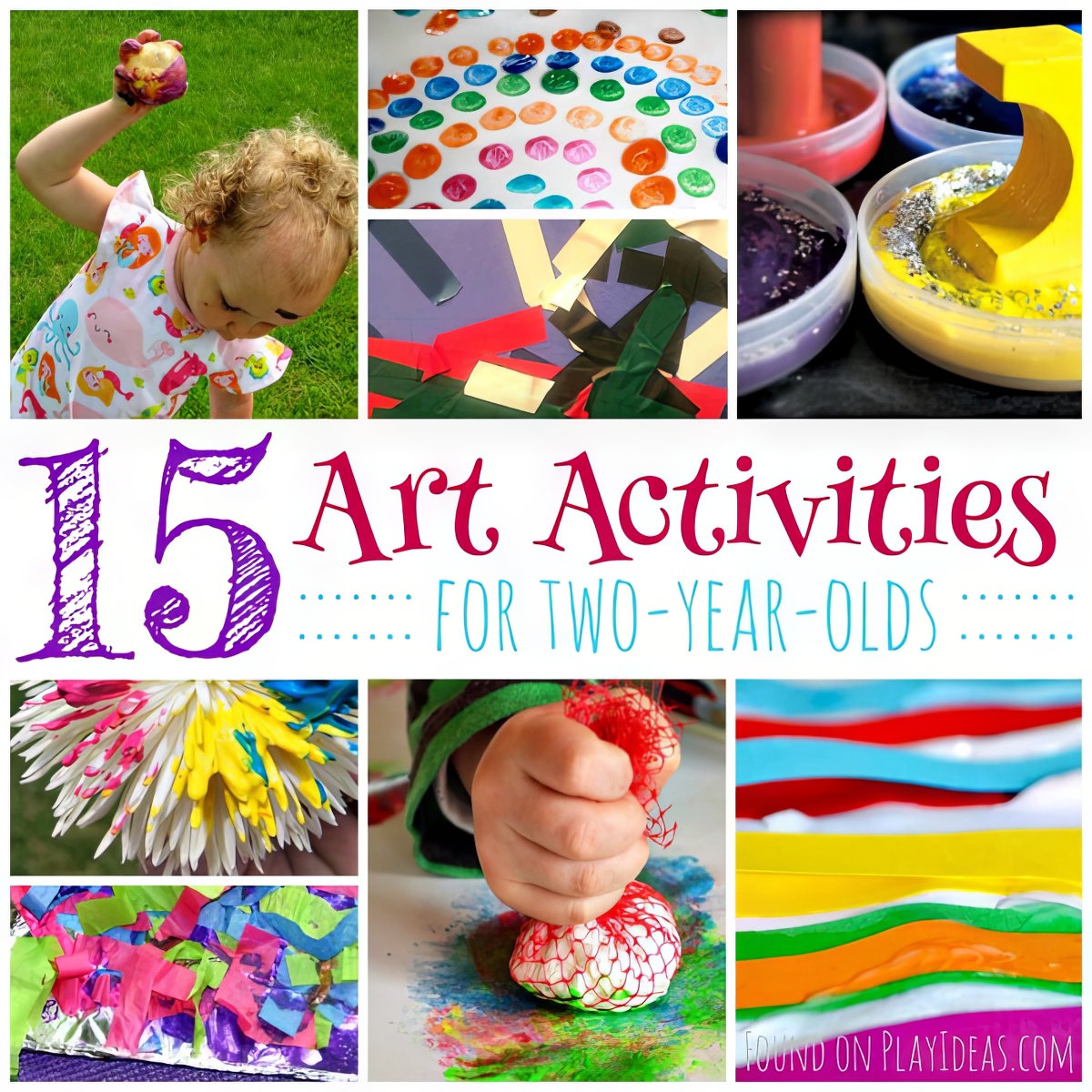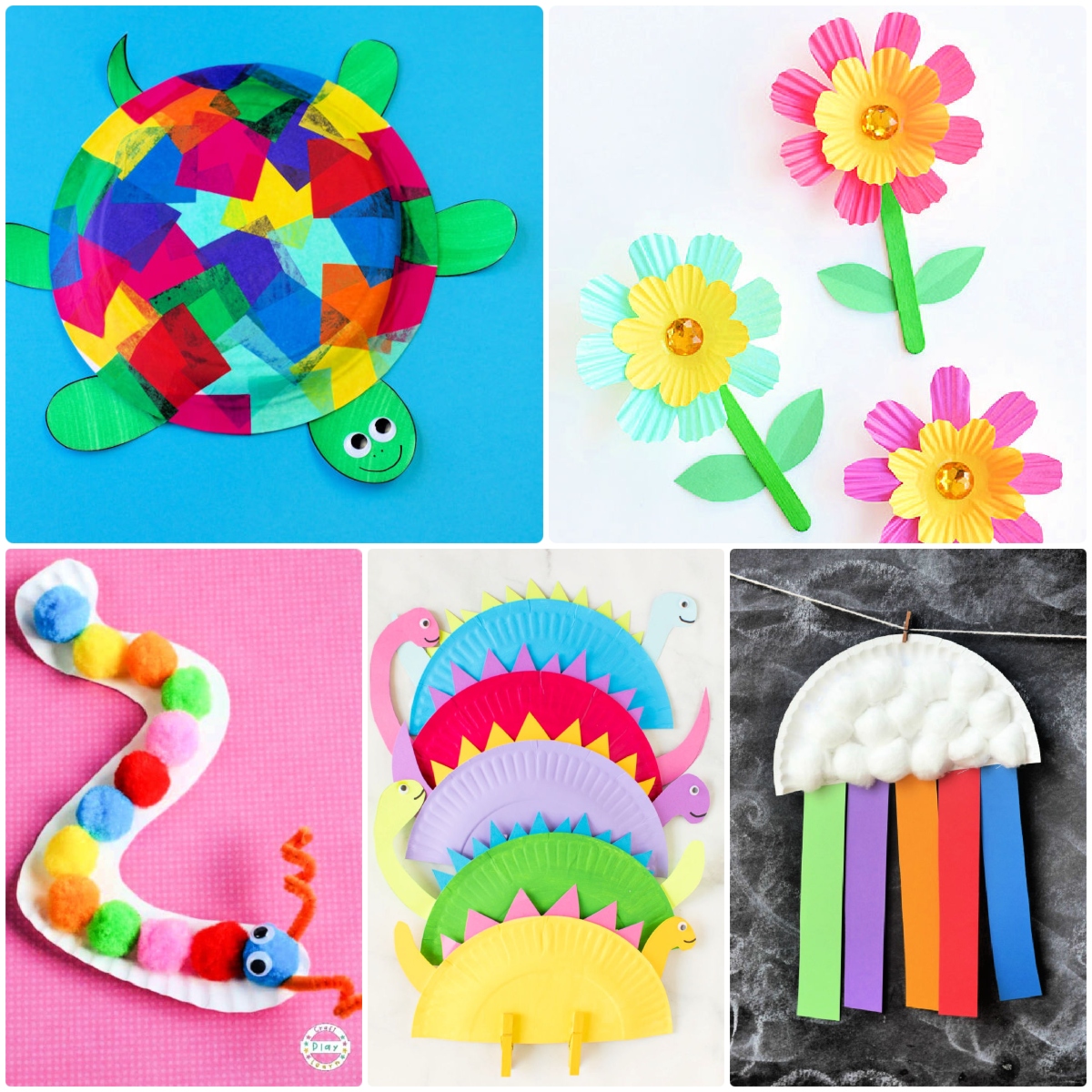DIY arts and crafts for 2 year olds: Forget the pristine Pinterest projects! This isn’t about creating miniature masterpieces; it’s about unleashing the glorious, gooey, glitter-bomb potential of your little Picasso. We’re diving headfirst into a world of finger paints, sensory bins, and crafts so simple, even a toddler can (mostly) manage them. Prepare for adorable chaos and maybe a little bit of cleaning up (but mostly adorable chaos!).
Get ready to embrace the mess, because the memories (and the art – maybe) will be priceless.
This guide tackles everything from choosing safe materials to cleaning up the inevitable aftermath (because let’s be honest, there will be an aftermath). We’ll explore simple craft ideas that boost fine motor skills, sensory explorations that spark imagination, and ways to adapt projects for different developmental stages. We’ll even sprinkle in some storytelling magic to make crafting even more engaging.
Buckle up, parents, it’s going to be a sticky, fun ride!
DIY Arts and Crafts for Two-Year-Olds: Unleashing Little Picassos
The world of arts and crafts offers a fantastic opportunity to nurture your toddler’s creativity and development. But with a two-year-old, safety and age-appropriateness are paramount. This guide provides a playful yet practical approach to crafting with your little one, focusing on simple, engaging projects that foster fine motor skills, sensory exploration, and imaginative play.
Suitable Materials for Two-Year-Olds
Choosing the right materials is crucial for a successful and safe crafting experience. The following table categorizes safe and readily available options, highlighting their benefits and potential drawbacks. Always supervise your child closely during crafting activities.
| Material Type | Examples | Benefits | Drawbacks/Precautions |
|---|---|---|---|
| Paper | Construction paper, newspaper, tissue paper, cardboard | Versatile, inexpensive, easy to clean up. | Can tear easily; supervise to prevent ingestion. |
| Paint | Finger paints (non-toxic), washable tempera paints | Encourages sensory exploration; vibrant colors. | Can be messy; use a drop cloth and old clothes. Ensure non-toxicity. |
| Natural Materials | Leaves, twigs, flowers, stones (smooth, non-toxic) | Provides tactile experiences; connects children to nature. | Thoroughly clean natural materials before use; supervise to prevent ingestion. |
| Other | Play-Doh (non-toxic), large buttons, yarn scraps, crayons (large, chunky) | Variety of textures and uses; stimulates creativity. | Supervise closely to prevent choking hazards; ensure non-toxicity. |
Preparation is key! Pre-cut paper into manageable shapes, squeeze out paint into small containers, and ensure all natural materials are clean and safe.
Simple Craft Ideas for Fine Motor Skill Development
Fine motor skills are essential for a child’s development. These crafts are designed to help your toddler develop dexterity and coordination.
- Paper Plate Animals:
- Provide a paper plate and various craft materials like paint, markers, googly eyes, and scraps of felt or construction paper.
- Guide your child in painting the plate and adding features to create an animal (e.g., ears, tail, spots).
- Adaptations: For children with limited fine motor skills, pre-cut shapes can be provided. Focus on simple pasting or gluing.
- Yarn Weaving:
- Create a simple loom using cardboard and yarn.
- Show your child how to weave the yarn over and under the cardboard strips.
- Adaptations: Use thicker yarn for easier manipulation. Focus on simple over-under movements, rather than complex weaving patterns.
- Button Sorting and Patterning:
- Gather various buttons of different sizes, colors, and textures.
- Encourage your child to sort the buttons by size, color, or shape.
- Adaptations: Start with two categories for sorting. For advanced skills, introduce patterning activities (e.g., red-blue-red-blue).
Adult supervision is vital to prevent accidents. Keep small materials out of reach to avoid choking hazards.
Creative Activities Promoting Sensory Exploration, Diy arts and crafts for 2 year olds
Sensory exploration is crucial for a toddler’s development. These activities stimulate the senses and encourage creativity through tactile experiences.
- Finger Painting with Different Textures: Use finger paints, along with various textured surfaces like sandpaper, bubble wrap, or fabric scraps. This introduces diverse tactile sensations.
- Homemade Playdough: Making playdough itself is a sensory experience! Kneading, rolling, and shaping the dough provides tactile feedback and encourages creativity.
- Nature Collages: Collect leaves, twigs, flowers, and other natural materials. Arrange and glue them onto paper to create nature-inspired artwork. This stimulates imagination and appreciation for the natural world.
Incorporating different textures and materials enhances the sensory experience and makes the activity more engaging for your toddler.
Adapting Crafts for Different Developmental Stages
Craft choices should align with a child’s developmental stage. The following table demonstrates how to adapt crafts for varying ages.
Notice diy mirror crafts for kids for recommendations and other broad suggestions.
| Age Range | Suitable Craft | Rationale |
|---|---|---|
| 18-24 months | Simple finger painting, large-piece puzzles | Focus on large motor skills and sensory exploration. |
| 2-3 years | Paper plate animals, yarn weaving (simple), collage | Develops fine motor skills and hand-eye coordination. |
| 3-4 years | More complex cutting and pasting, beading (large beads), drawing | Improves fine motor control and creativity. |
Incorporating Storytelling and Themes

Integrating storytelling and themes adds another layer of engagement to crafting activities.
- Farm Animals: Create farm animals using simple shapes and natural materials. Tell stories about the animals while crafting.
- The Very Hungry Caterpillar: Make a caterpillar using construction paper and pipe cleaners. Read the story and create each stage of the caterpillar’s transformation.
- Rainbow Colors: Create a rainbow collage using different colored papers and materials. Discuss the colors and their order while crafting.
Storytelling enhances engagement by providing context and meaning to the crafting process.
Creating a Safe and Engaging Craft Space
A well-organized and safe craft space is essential for a positive crafting experience.
Safety First! Keep small craft supplies out of reach. Use non-toxic materials. Always supervise your child closely. Cover work surfaces with a drop cloth.
Imagine a bright and colorful space with a low, sturdy table and child-sized chairs. Storage containers are clearly labeled and easily accessible to your toddler (with appropriate supervision). The area is well-lit and free from hazards. The color scheme is cheerful and inviting, perhaps with pastel shades and playful accents. Craft supplies are organized in clear containers, with larger items like paper and crayons readily available.
Small, potentially hazardous items are stored securely in closed containers out of reach.
Cleaning Up and Storage Solutions

Cleaning up is an important part of the crafting process. Involving your toddler in cleanup reinforces responsibility and teaches valuable life skills.
- Use washable materials whenever possible.
- Provide small bins or containers for easy sorting of materials.
- Make cleanup a fun game, singing songs or setting a timer.
- Encourage your child to help put away supplies.
Employ clear, labeled containers for easy storage and retrieval. Organize materials by type and size for efficient management.
So, there you have it – a whirlwind tour of the wonderfully messy world of DIY arts and crafts for 2-year-olds. Remember, the goal isn’t perfection, it’s process. It’s about fostering creativity, exploring textures, and building those precious fine motor skills. Embrace the finger painting frenzy, the glitter explosions, and the proud smiles that come with creating something (even if it’s slightly abstract).
And most importantly, remember to laugh – a lot! Because crafting with toddlers is less about the end result and more about the joyful journey.
Questions and Answers: Diy Arts And Crafts For 2 Year Olds
What if my 2-year-old isn’t interested in a particular craft?
Don’t force it! Try a different craft, or revisit it another day. Sometimes, a child’s interest changes based on their mood and developmental stage.
How do I prevent my toddler from eating the craft supplies?
Supervise closely! Choose non-toxic materials, and keep potentially hazardous items out of reach. Consider using taste-deterrent products if necessary (but always check for safety first!).
What if my toddler makes a huge mess?
Embrace the mess! It’s part of the fun. Have plenty of wipes, paper towels, and a sense of humor on hand. Involve your toddler in the cleanup process, turning it into a game.
My toddler has limited fine motor skills. Can they still participate?
Absolutely! Adapt the crafts to their abilities. Focus on the sensory experience, and provide assistance as needed. Simple activities like tearing paper or finger painting are great starting points.

